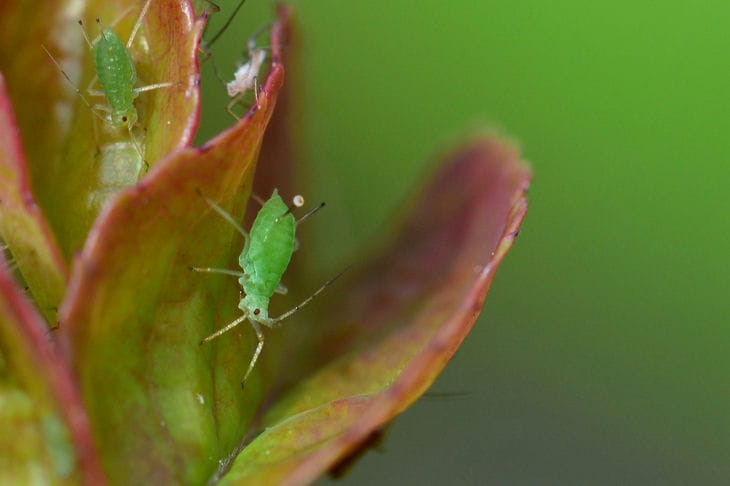Aphids can be found on most ornamental and cultivated plants. They are pests that easily transmit viral diseases to healthy plants.
They suck moisture from young leaves and shoots of flowers and fruits. This leads to inhibition of plant growth, deformation of leaves and buds, and then drying out.
What does an aphid look like?
Aphids are a common insect that live in colonies. If left unchecked, they can occupy almost all plants in the garden, says Anastasia Kovrizhnykh .

Aphids are quite small, have a soft and delicate body and membranous wings. Insects vary in size and color, usually their size reaches 2-5 mm, and depends on the type of plant they feed on.
Young insects usually live on the upper side of the leaf, adults - on the lower side. Aphids reproduce at a very fast rate, in one season under favorable conditions from 10 to 20 generations can change, each time several dozen individuals hatch from the clutch.
Why are aphids harmful to plants?
Aphids feed on plants and live in large colonies. Depending on the species, they feed on certain types of plants and even certain parts of them.
There are several hundred species of aphids. Most of them are pests of agricultural crops. The insects readily feed on young, juicy shoots of plant tops, flower buds and inflorescences. They suck in plant juice, drying out the plant.
As a result, its growth slows down, and the leaves and buds become deformed and die. In addition, pests also carry many viral diseases. Aphids with wings can spread viruses from diseased plants to distant healthy shoots.
In addition, insects secrete a sticky substance that remains on the plant, which is a good environment for the development of various fungal infections.
How to Prevent Aphid Infestation
Due to the diversity of species, small size and fertility of aphids, it is difficult to control them. It is better to try to prevent their invasion in advance.
To protect ornamental plants from aphids, it is necessary to systematically destroy the weeds on which they reproduce and develop. It is also worth ensuring the correct development of plants, since healthy specimens are more resistant to aphids.
It is important to regularly inspect the plants in the garden and quickly determine the location of aphid colonies. Mint is a deterrent to pests, so it is worth planting it between ornamental and vegetable plants.
Fighting aphids
Regular monitoring of plants will allow you to quickly detect the first clusters of aphids. At the initial stage, they can be removed manually or by rinsing the plant with a strong stream of water.
Before deciding on chemical preparations, you can try using homemade products.
Pests can be repelled by an extract of nettle, yarrow, chamomile, dandelion, elderberry, onion, and garlic. This solution can be obtained by soaking dried or fresh plants (100-200 grams) in a liter of boiling water.
Then the extract is infused for 24 hours. Before treating the entire area, try the composition on several plants.
A soap solution can also be used as a natural remedy. Grate 250-300 grams of household or tar soap and dilute in 10 liters of warm water.
If home methods are unsuccessful, you will have to use chemicals.
However, you should choose a product that does not kill beneficial insects. The natural enemies of aphids are ladybugs, hoverfly larvae, and lacewings.
Previously we reported on ways to combat moles.









